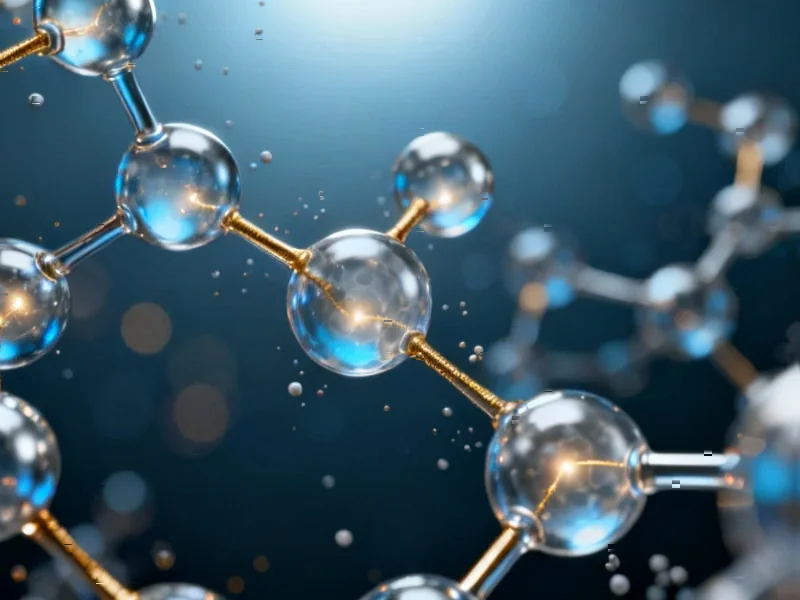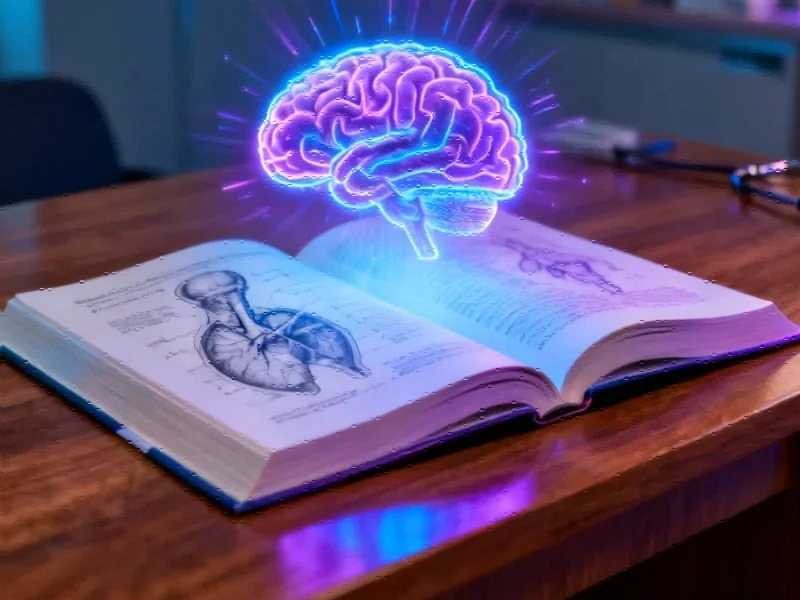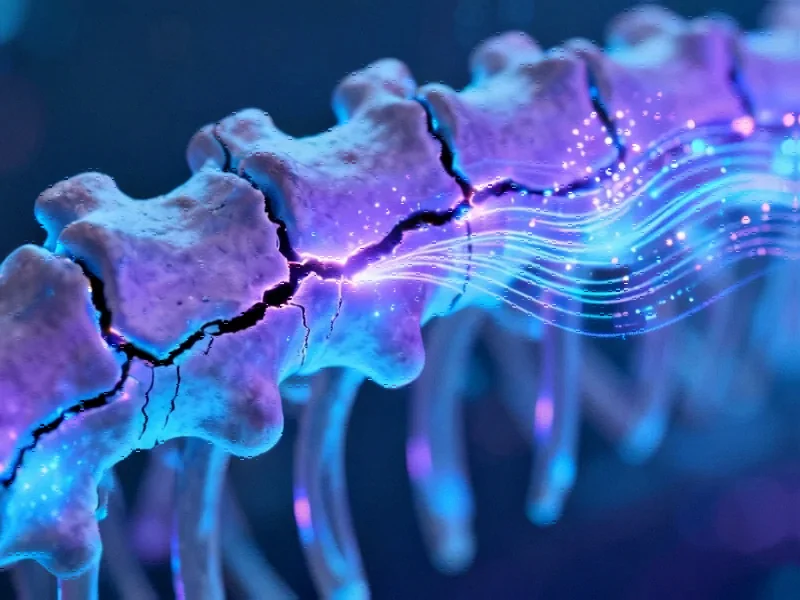Gold Nanoparticles Alter Key Cancer Protein Structure
Researchers have uncovered how gold nanoparticles interact with and modify the structure of AKT1, a protein critical in cancer signaling pathways, according to a recent study published in Scientific Reports. The investigation provides molecular-level insights into how nanoparticle surfaces affect protein conformation and function, with potential implications for cancer therapy and nanomedicine development.
Table of Contents
- Gold Nanoparticles Alter Key Cancer Protein Structure
- Molecular Dynamics Reveals Binding Mechanisms
- Structural Stability and Compactness Affected
- Functional Implications for Cancer Signaling
- Key Functional Regions Targeted
- Implications for PI3K/AKT Signaling Pathway
- Research Methodology and Limitations
Molecular Dynamics Reveals Binding Mechanisms
Using computational methods, scientists reportedly investigated the stability and structural changes of AKT1 protein when exposed to gold nanoparticles. Sources indicate the team prepared a gold nanoparticle sheet with one surface covered with citrate molecules and evaluated two different conformations of the AKT1 protein – PH-in and PH-out – in the presence of these nanoparticles., according to industry reports
The report states that molecular docking using Patchdock successfully predicted the best binding modes between AKT1 protein and the gold surface. Analysis suggests that charged residues on the kinase domain of AKT1 are pivotal in binding to the gold surface in both conformations, aligning with earlier studies showing citrate-coated gold nanoparticles preferentially interact with positively charged or polar residues on proteins.
Structural Stability and Compactness Affected
According to the analysis, the AKT1 protein in PH-in conformations shows relatively higher stability when complexed with nanoparticles, potentially due to strong interactions that limit large-scale structural changes. However, in PH-out conformation, the protein reportedly displayed better stability in its free state than when complexed with gold nanoparticles after the first 50 nanoseconds of simulation.
The research indicates gold nanoparticles significantly affect AKT1 protein compactness. Analysts suggest proteins in complexed states have less compactness than in free state, as evidenced by changes in radius of gyration measurements. Solvent-accessible surface area calculations reportedly confirm these structural changes, showing the AKT1 protein in free state has less surface exposure than when complexed with gold surfaces.
Functional Implications for Cancer Signaling
The structural changes observed may have significant functional consequences, according to researchers. The expanded state of AKT1 when bound to gold nanoparticles may reduce phosphorylation efficiency at critical sites Thr308 and Ser473 by increasing conformational entropy and reducing accessibility of these phosphorylation sites. These alterations suggest gold nanoparticles disrupt the activation mechanism of AKT1 by destabilizing its active conformation.
Secondary structure analysis reveals specific domain alterations, with the linker domain in PH-in conformation and C-terminal regions in PH-out conformation showing the most changes. The report states these modifications could affect the protein’s ability to interact with upstream regulators or downstream effectors in cellular signaling pathways.
Key Functional Regions Targeted
Analysis indicates the gold nanoparticle surface disturbs three separate, surface-exposed regions on AKT1 protein:
- The phosphoinositide-binding edge of the PH domain (residues 15-110)
- The linker domain connecting the PH domain to the kinase region (approximately 125-165 residues)
- The activation-loop tip (308-325 residues) containing the regulatory Thr308 site
Researchers suggest these regions are inherently mobile extensions of a rigid catalytic scaffold, and their structural transitions adjust membrane binding and phosphorylation kinetics without completely compromising the overall kinase structure.
Implications for PI3K/AKT Signaling Pathway
The findings have particular significance for the PI3K/AKT/mTOR pathway, a crucial signaling cascade frequently dysregulated in cancer. According to the report, gold nanoparticles may restrict movement and orientation of the PH domain, making membrane recruitment and interaction with PIP3 unfavorable, thereby limiting access to PDK1 and mTORC2 for full AKT activation.
Analysts suggest the predicted functional consequence is attenuated PI3K-AKT-mTOR signaling, consistent with allosteric and reversible modulation rather than protein denaturation. This mechanism could potentially be exploited for therapeutic purposes where modulation of this pathway is desired.
Research Methodology and Limitations
The study utilized molecular dynamics simulations to investigate protein-nanoparticle interactions over 100 nanosecond timescales. However, researchers note that the random arrangement of citrate on gold surfaces in simulations may not perfectly represent the quasi-ordered arrangements observed in experimental systems. The report states that while computationally simple, random starting arrangements may preserve artifacts and affect reproducibility.
Free energy landscape analysis reportedly shows that in the presence of gold nanoparticles, fewer energy basins were observed than in the free state of AKT1 protein, indicating higher conformational mobility and lower structural stability when complexed with nanoparticles.
The research provides fundamental insights into how nanoparticle surfaces interact with biologically important proteins at the molecular level, with potential applications in drug delivery, cancer therapeutics, and nanomedicine safety assessment.
Related Articles You May Find Interesting
- South Africa Prioritizes Climate Finance and Adaptation Ahead of COP30 Summit in
- Hyperscale Leasing Frenzy: Q3 2025 Data Center Demand Shatters Records as AI Gia
- Beyond Buzz: How AI Tools Like Hebbia Are Reshaping Investment Banking’s Core Wo
- Bridging Britain’s Skills Gap: New “Work and Teach” Visa Proposal Gains Momentum
- Venture Capital Shifts Focus to MedTech’s Innovation Pipeline and Faster Returns
References & Further Reading
This article draws from multiple authoritative sources. For more information, please consult:
- http://en.wikipedia.org/wiki/Protein_secondary_structure
- http://en.wikipedia.org/wiki/Pleckstrin_homology_domain
- http://en.wikipedia.org/wiki/AKT1
- http://en.wikipedia.org/wiki/Colloidal_gold
- http://en.wikipedia.org/wiki/Conformational_isomerism
This article aggregates information from publicly available sources. All trademarks and copyrights belong to their respective owners.
Note: Featured image is for illustrative purposes only and does not represent any specific product, service, or entity mentioned in this article.



